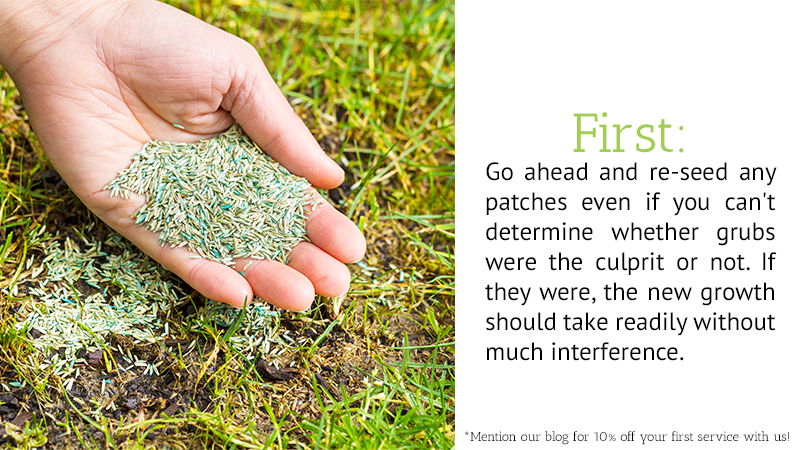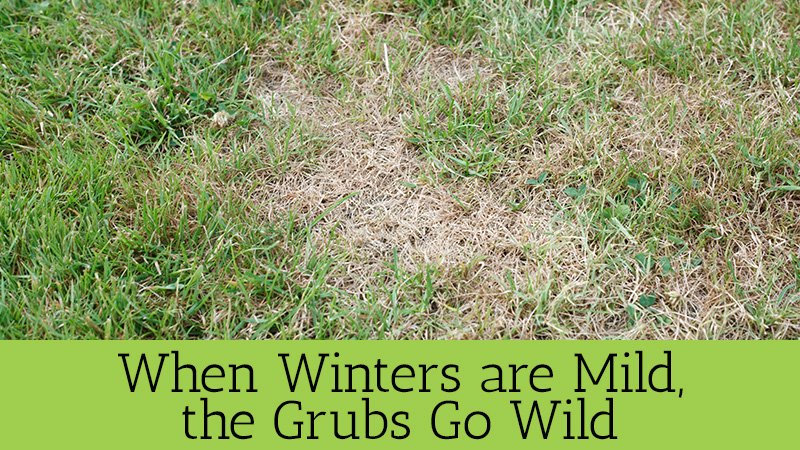Mild winters may seem like a pleasant enough break from the usual cycle of freezing temperatures and gray skies, but there’s a pest lurking under the ground that also loves warm temperatures. Cold and frosty winters are part of nature’s cycle for controlling pests in particular areas. Those freezing temperatures kill off at least some of the insects trying to hibernate through the season, resulting in fewer bugs ready to do damage as soon as it warms up again. This process effects white grubs, one of the most damaging and hard to control lawn pests.
The Grub Problem
Are you already noticing dead patches in your lawn as the growth resumes for the spring? If the patches are large and appear dead, it’s likely grub damage that was already done last fall as they prepared to sleep through the winter; this is the primary feeding time and also the best time to treat them. Unfortunately, many people don’t realize that damage was done until the next spring. While the grubs do re-emerge and do some root-killing feeding in the spring too, it’s only for a few weeks. This makes it harder to apply pesticides and kill them in the spring. You have to guess if they’re present or not right below the surface and digging up the turf to check will kill patches of your lawn.

Not all lawn grubs come from the same species. Depending on where you live, you could be dealing with the larvae of June beetles, Japanese beetles or other common beetles. All types of grubs share a similar white and chubby appearance and produce the same damage.
Treating Grubs and Grass Loss
First, go ahead and re-seed any patches even if you can’t determine whether grubs were the culprit or not. If they were, the new growth should take readily without much interference. The grubs currently underground will turn into beetles and depart by June or July, so build a plan to prevent them from reinfesting your lawn with fresh eggs and grubs this late summer and fall. The grubs emerge about six weeks before the winter frosts begin, which makes it the perfect window for soaking the lawn with a grub targeting pesticide. They’re near the surface at this point eating your tender lawn roots and ready to absorb pesticides that will kill them. Grubs are also much smaller and easier to treat at this stage. This is because they’re large and nearly beetles in the spring and capable of taking large doses of pesticides without much effect.
Are you looking at a lawn that’s been ravaged by grubs and wondering how to restore it? Let Meyers Green Services do all the hard work of removing the damaged and dead turf plants, amending the soil, seeding in new grass and helping it get established. With our 10% discount for anyone mentioning our blog, it’s the perfect time to get landscaping help.


